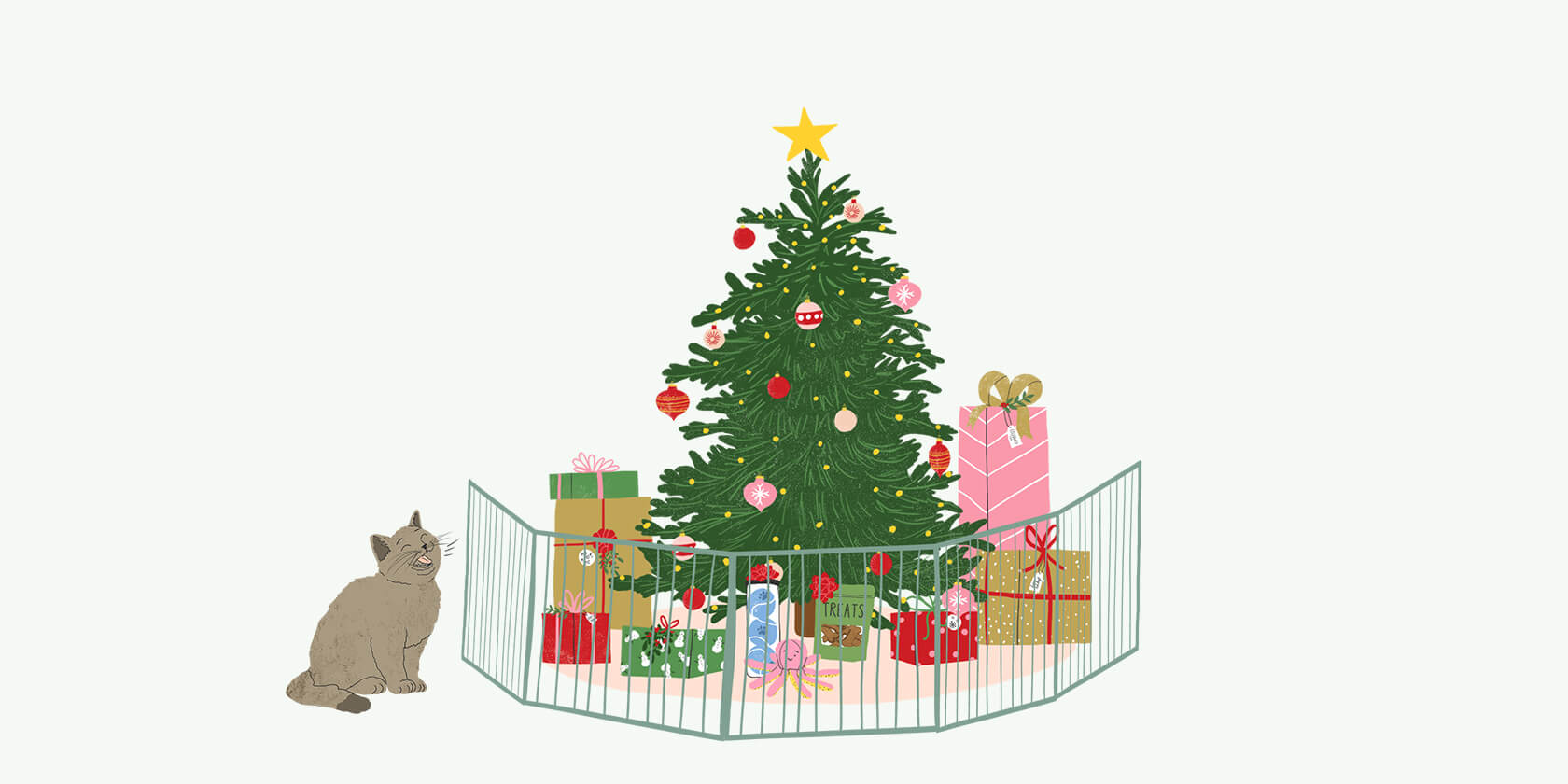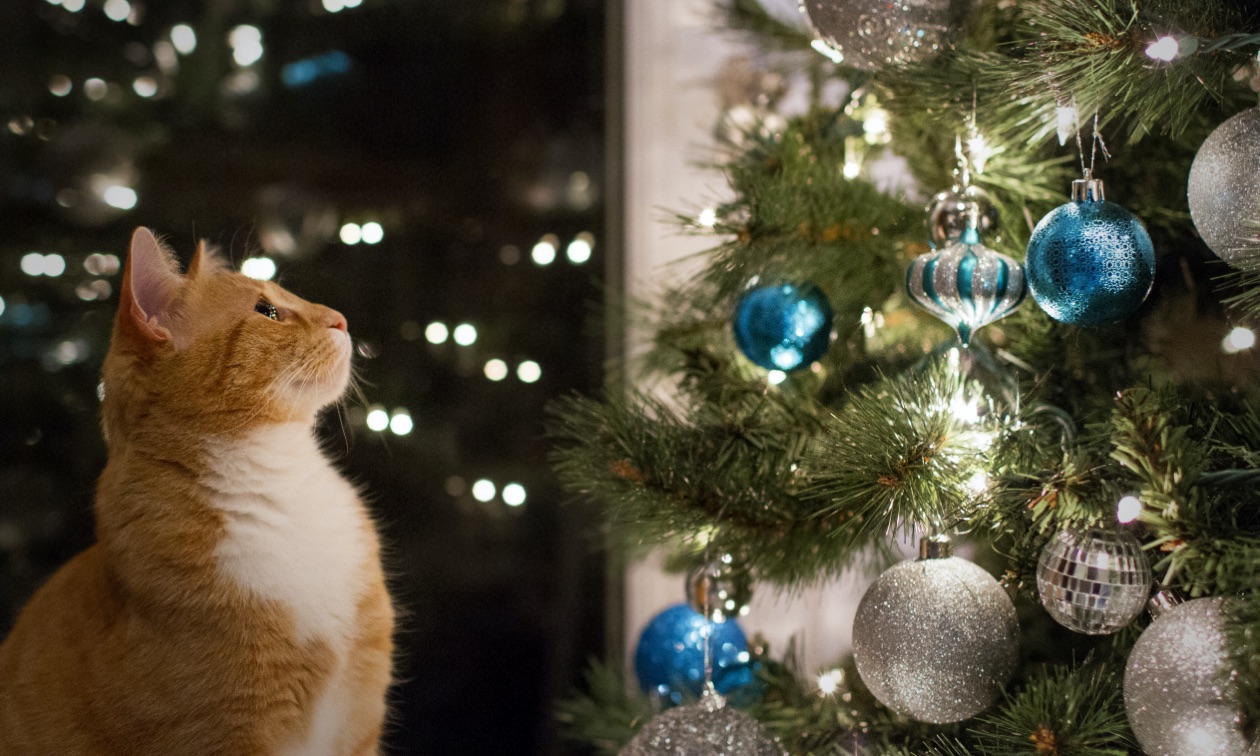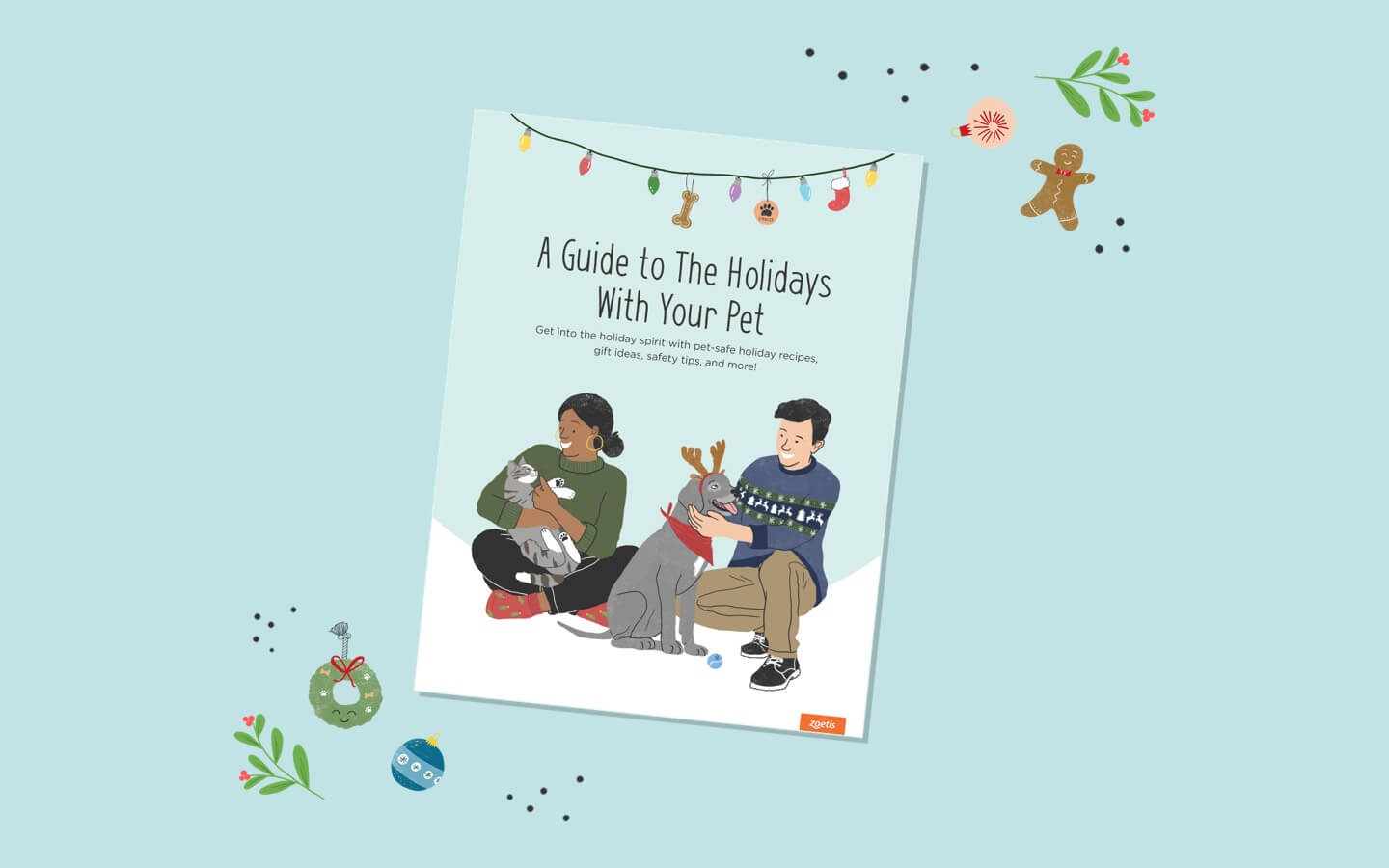Cats and Christmas trees are a tricky combination. Why? Because Christmas trees check off several cat favorites: climbing opportunities, bouncing ornaments, twinkling lights, string-like wires, and a big blanket around the bottom. It's kitty heaven (or at least that's what they think).
The truth is Christmas trees can be dangerous for your cat, in addition to the annoyances they can cause you when your ornaments are all over the floor. The good news is that there are ways to keep your cat out of your Christmas tree.
Are Christmas Trees Dangerous for Cats?
If precautions aren't taken, there's a lot on your Christmas tree that poses a danger to your cat.
- Stability. If your tree is not well-secured, it's easy for a climbing session, tug-of-war with the garland, or even a case of the zoomies to tip it right over.
- Chewing hazards. Just about anything on your tree can be bad news if your cat is a big chewer. Some soft ornaments look a lot like their chew toys, but they probably aren't made with pet-safe materials. Pieces of hard decorations can break off and damage teeth, gums, and lips, and those pesky wire hooks can poke into the cheeks and gums.
- Ingestion risks. Tree décor like garland, tinsel, hanging hooks, and pieces of ornaments pose the risk of gastrointestinal upset, puncture, or blockage if eaten, which could result in a trip to a veterinary clinic and potentially emergency surgery. This is true of the tree bark and needles (even artificial needles) as well. Lastly, the water in the base of your tree can pose a risk, as it can contain fertilizer or other harmful chemicals and bacteria (all of which can cause nausea, diarrhea, and stomach upset).
- Fire and shock. The light wires in the tree, and the cord to the outlet, can shock your cat if chewed. This is also a considerable fire risk.
It sounds scary! But don't worry — you don't have to abandon your Christmas tree traditions. You just need to be proactive and dedicate a little time to training.

How to Cat-Proof Your Christmas Tree
The first thing to consider is how to secure your tree so it's less likely to be pushed, pulled, or dragged.
- Go with a nice, wide stand to provide as much stability as possible.
- Consider using wire, rope, or heavy nylon line near the middle or top of the tree to secure it to the wall or ceiling.
- Position your tree away from perches like shelves, bookcases, and high-backed chairs. Your cat can use these as a launching pad to dive into the middle of the tree.
Next, think about what's going on your tree.
- Pick sturdy ornaments that are less likely to break.
- Consider skipping stringy decorations like tinsel and fuzzy garland.
- Avoid putting edible decorations on the tree, such as strings of popcorn or cranberries or cookie ornaments.
- Make sure ornaments are well-secured. Loop hangers can hold ornaments in place better than metal hooks.
- Some ornaments and other holiday decorations come scented. Be aware of scents that are dangerous for cats, such as cinnamon and peppermint essential oils.
- Make sure your tree's water source is covered and completely inaccessible to pets.
- Use cord protectors to keep wires safe from kitty teeth.
Keeping Your Cat Away from the Christmas Tree
Making sure your cat will be safe if they do head for the tree is important. You can add another layer of security by doing a few things to keep the cat away from the tree altogether.
- Block from the bottom. There are products available that form a barrier around the lower branches, from the trunk to the outer circumference of the tree. This blocks your cat's access to climb from the bottom up.
- Go for a tall, skinny tree. Try a different style of tree. Instead of voluminous branches and a big trunk, try a pencil tree. These tall, slender trees may be less appealing to your cat, especially for climbing.
- Build a wall. Collapsible pet gates set up a distance from the tree can help deter kitty. Make sure the bars are vertical, as horizontal bars or a cage/grid pattern can be easily climbed by most cats. Of course, they may jump over the barrier, but that's where a little training can come in handy.
- Provide climbing and play alternatives. Give your cat perches so they can exercise their need to climb, and make sure they have toys they can play with in the Christmas tree room. Even having a cat-safe plant in the area, like catnip, can help satisfy your cat's desire to eat the needles and ornaments.
Training Your Cat to Stay Out of the Christmas Tree
Yes, cats can be trained to follow commands and use acceptable alternatives to meet their needs.
Show your cat that something good happens when they stay away from the Christmas tree. Give them a favorite treat, verbal praise, play session, petting — whatever they love — for sitting calmly near the tree, playing appropriately with their own toys near the tree, or coming away from the tree when called.
ZPC-01454R1



